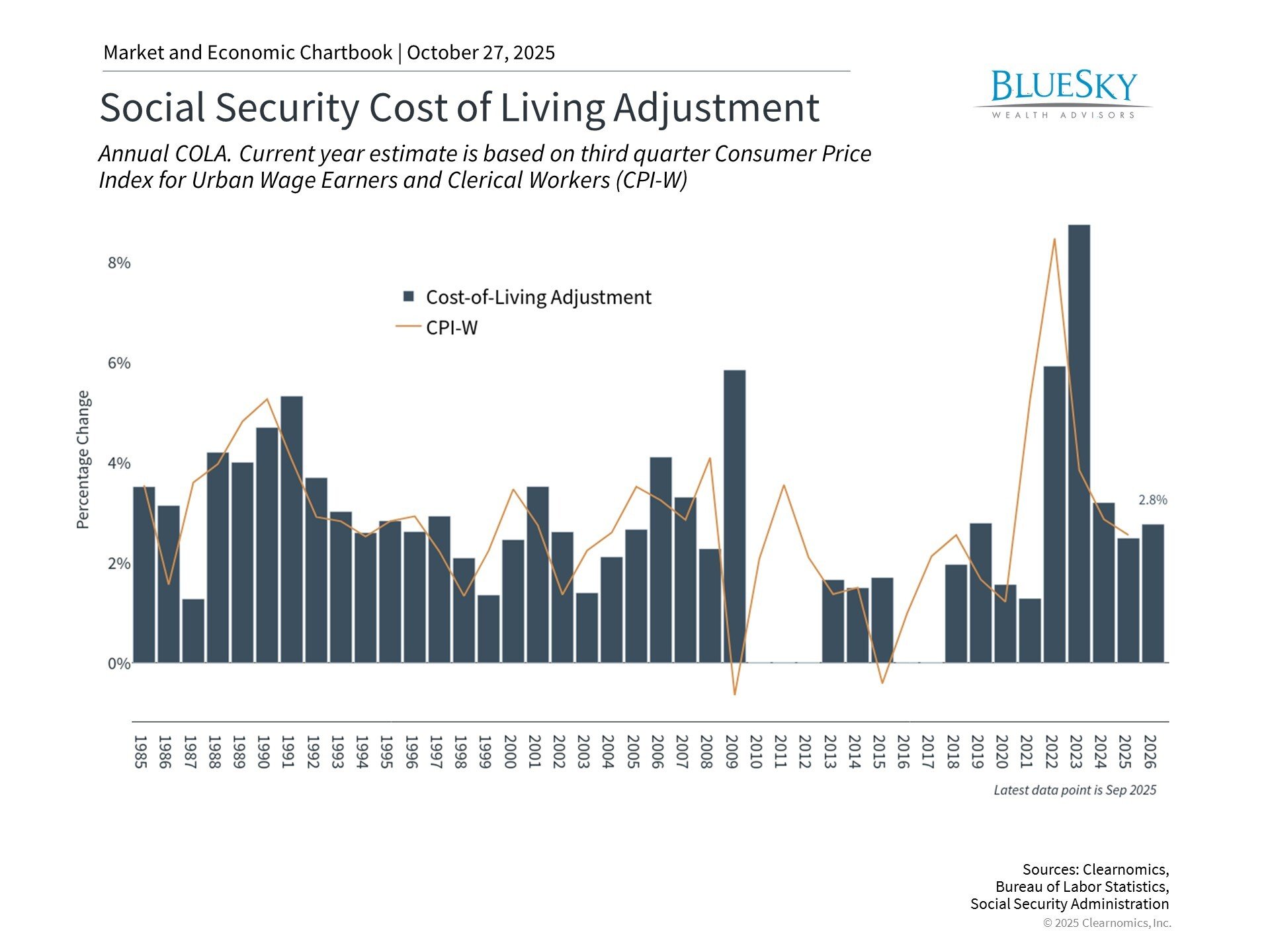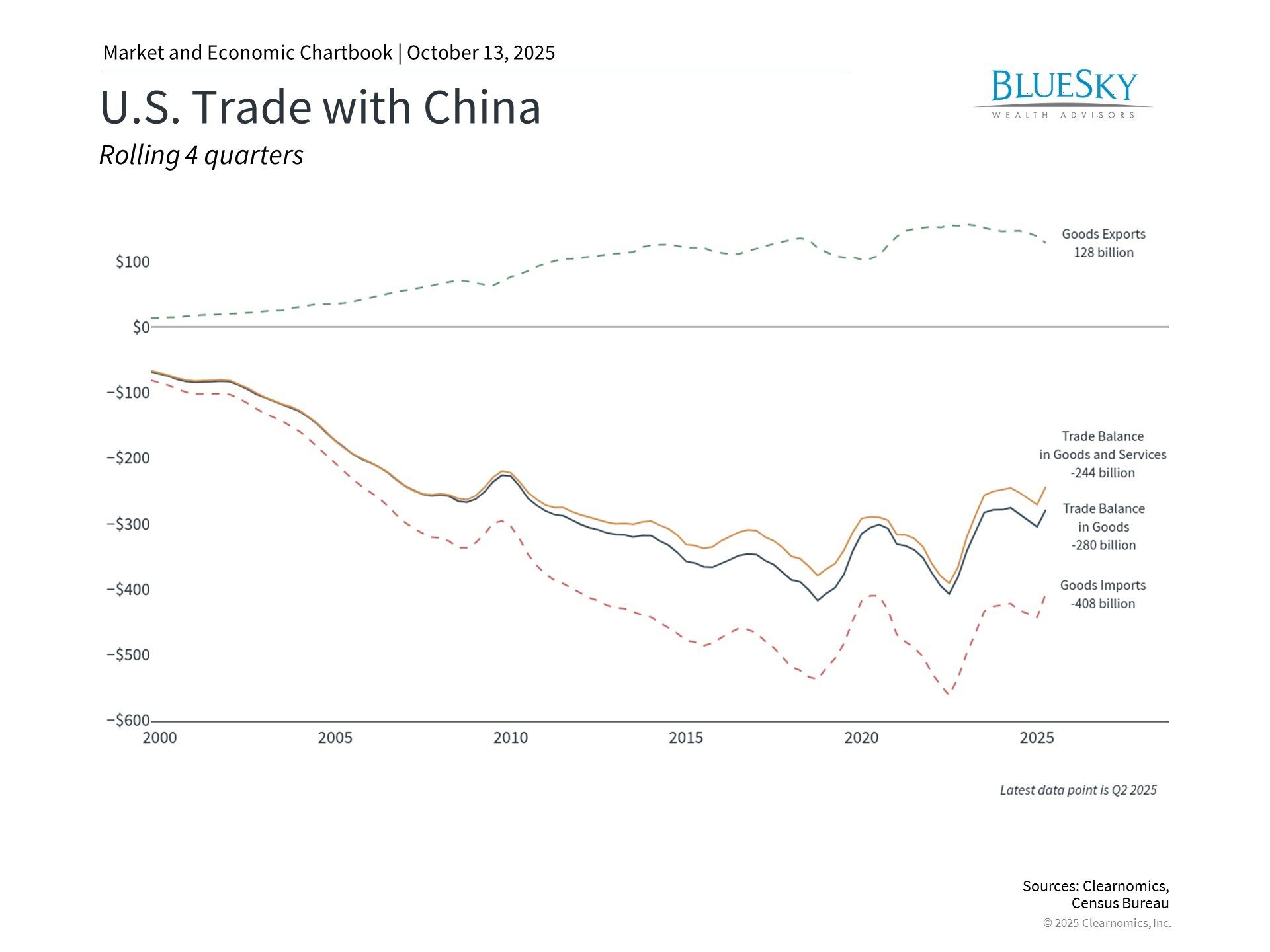
What Is an Example of Market Allocation? Blue Sky Wealth Advisor
What Is an Example of Market Allocation? Blue Sky Wealth Advisor

Are you curious about market allocation? What is allocation? Market allocations are a powerful tool businesses use to determine how resources should be allocated within a particular market. Understanding the concept of market allocation can help you get ahead in today’s competitive business landscape.
This article will provide a comprehensive overview of what market allocation is and give some examples that can be used to help illustrate the concept. We’ll also examine how competitors divide markets and why it is important for businesses to understand various needs. Keep reading to learn more!
What Is Market Allocation?
Market allocation is a strategic approach to determining how a company’s resources are distributed across various market segments. It involves analyzing market trends, buyer behavior, and competitive landscape. With these insights, businesses can aptly allocate their resources to areas with the most profit or growth potential.
Market allocation can be seen in action across various industries. For instance, a tech firm may invest more in developing AI technologies if market analysis indicates a rising demand for AI-driven solutions. Similarly, a garment manufacturer may allocate more resources to eco-friendly clothing lines if market trends suggest growing consumer awareness about sustainability. Antitrust laws enable businesses to stay competitive and ensure efficient use of resources and maximized returns.
Types of Market Allocations

There are several different types of market allocations. The most common include:
Geographic Areas Allocated
Geographic allocation is a market allocation strategy in which a company designates its resources based on the geographical areas it serves. This strategy enables businesses to tailor their products, marketing, and services to suit customers’ needs and preferences in specific regions. For example, a global fast-food chain like McDonald’s implements geographic allocation by offering menu items that cater to local tastes.
In India, where a large proportion of the population is vegetarian, you’ll find options like the “McAloo Tikki,” a spiced potato and pea patty burger you wouldn’t find in a McDonald’s in the United States. Similarly, a cosmetics company might introduce products with higher sun protection in markets closer to the equator where the sun’s rays are more intense. Businesses can optimize resources, meet customer needs more effectively, and divide sales territories through effective geographic allocation.
Demographic Allocation
Demographic allocation is a market strategy in which companies allocate resources based on customer age, gender, other competitors’ income, education level, and other characteristics. By understanding the demographic differences between target markets, businesses can create tailored experiences that meet the needs of antitrust violation groups. For example, a retail store may introduce products geared toward young adults if its market analysis reveals that many of its target customers are in that demographic group. Similarly, a luxury car company might allocate resources to marketing campaigns targeting high-income individuals who can afford their vehicles.
Psychographic Allocation
Psychographic allocation targets customers based on their shared interests, values, beliefs, and lifestyle choices. By understanding the psychographic characteristics of different target groups, businesses can create more meaningful customer experiences. For example, a health and wellness company in the United States Department might focus its marketing efforts on certain customers who prioritize healthy habits by promoting workouts or recipes that align with their values. Or an outdoor gear company might use psychographics to target customers passionate about camping and hiking by highlighting the features of its products that appeal to those activities.
Factors To Consider When Allocating Markets

There are a variety of factors to consider when allocating markets. These include the following:
Supply and Demand
Supply and demand is the most fundamental economic concept and a key guiding principle for businesses when allocating their markets. If a product or service is in high demand but has low supply, it’s an opportunity for companies to step in and meet that demand. Conversely, suppose there is a high supply but low demand. In that case, businesses may need to adjust their strategies, such as lowering prices, improving product features, or shifting toward a different market altogether.
For example, consider the market for electric cars. Over the past decade, there’s been an increase in consumer demand for these vehicles due to growing environmental consciousness and advancements in technology. Recognizing this trend, automakers like Tesla, Nissan, and Chevrolet have responded by increasing their supply of electric cars, thereby effectively allocating their markets based on supply and demand. Similarly, businesses in declining markets, such as traditional cable TV providers, have had to reallocate resources and pivot towards streaming services due to the lower demand for their traditional services and the higher demand for streaming. Understanding supply and demand dynamics can help other’s existing customers better allocate resources, optimize their marketing strategies, and achieve price fixing success.
Competitor Analysis
When a business enters a new market, it’s important to consider the existing competition. Analyzing competitors can give companies valuable insights into the competitive landscape and help inform their resource allocation strategy. This can include researching competitor pricing models, understanding customer needs and preferences, and analyzing weaknesses in competitors’ offerings.
For example, a business entering the electric car market could use competitor analysis to determine which features and pricing models have been successful for existing players in the space and which areas they could capitalize on with their offerings. By understanding their competitors’ strengths and weaknesses, businesses can develop an effective strategy to assign customers resources across different markets.
Cost-Benefit Analysis
Cost-benefit analysis is a key tool for businesses when allocating their resources. It helps companies weigh the costs of entering and competing in new markets against the potential benefits they could receive from pursuing such opportunities. For example, launching an electric car lineup may require significant investments in research and development, manufacturing, and marketing. A cost-benefit analysis could help a business determine if the potential profits outweigh these costs. This type of analysis can also be used when deciding whether to pursue an in-house solution or outsource certain activities that would help the company raise prices.
Customer Segmentation
Customer segmentation is a key tool for businesses looking to optimize their market allocation strategies. It involves dividing customers into groups based on shared characteristics, such as demographics, location, and buying habits. Conspirator companies can use customer segmentation to determine which markets are most attractive to target with their offerings and allocate resources accordingly. For example, a business selling electric cars may find a higher demand for luxury models in certain regions or among certain age groups. Understanding this allows them to adjust their marketing strategies and allocate resources to capture these customers.
Market Positioning
Market positioning is a key tool for businesses seeking an edge in the competitive marketplace. It involves creating a distinct image or brand perception with customers by emphasizing unique features of their offerings that set them apart from competitors. Market positioning can also help businesses decide which markets to target and how best to allocate resources to achieve their desired goals. For example, a company launching an electric car lineup may position itself as the go-to option for luxury models with advanced features and cutting-edge technology. This would inform their decisions on which markets to pursue and how best to allocate their resources accordingly.
Competitor Analysis
Competitor analysis is a critical piece of the market allocation puzzle. It involves researching competitors to understand their strengths and weaknesses better, identify opportunities, and develop effective strategies to optimize resource allocation. For example, a business selling electric cars may review its competitors’ offerings to determine how they can differentiate their products from the competition and better position themselves in the market. This would allow them to focus on needs more likely to embrace their product offering and allocate resources accordingly.
Track Performance
Companies must also track the performance of their market allocations to ensure they are using resources efficiently and effectively. This requires collecting data on key metrics such as customer acquisition, conversion rates, revenue growth, profitability, and more. Tracking these metrics can help identify areas where improvements can be made and allow companies to allocate resources accordingly. For example, suppose a company notices that its electric car sales have been declining in certain markets. In that case, they may double down on marketing efforts or reallocate resources to those markets.
Assess Risks
Businesses must assess the risks associated with market allocation decisions. Doing so will help them identify potential pitfalls and develop strategies to mitigate any threats arising from their choices. For example, a company launching an electric car lineup may consider the impact of changing fuel prices on sales or potential government regulations that could affect their plans. By assessing these risks, the company can make more informed decisions about where to allocate resources and how to manage any associated risks.
Adapt Strategies As Needed
Companies should also recognize that market allocation strategies must be adapted as their industry, customers, and competitors evolve. This could involve reassessing markets to see where additional resources may need to be allocated or shifting focus from one market segment to another. Doing this helps companies remain competitive in the ever-changing landscape of the marketplace. Companies must also review the performance of their strategies regularly and make adjustments as needed.
Leverage Technology
Technology has become an essential tool for companies to leverage regarding market allocation. By utilizing data and analytics, businesses can gain insight into customer behavior, trends in the marketplace, and potential risks associated with their strategies. This type of intelligence can provide valuable information that helps companies make more informed decisions about where and how to allocate resources.
Additionally, technology can be used to automate processes related to market allocation, such as advertising campaigns and tracking customer purchases. This can help companies save time and money, allowing them to focus their energy on more strategic decisions.
Benefits of Market Allocation

Market allocation is a powerful tool for companies that want to optimize their resource utilization and maximize their returns. Here are some of the key benefits of market allocation:
Helps Allocate Resources
Market allocation is instrumental in effective resource management, particularly in businesses with finite resources that must be prudently managed. By identifying and focusing on profitable markets, companies can channel their resources, time, manpower, and capital into areas that yield the highest return on investment. For instance, a thorough market allocation analysis in online retail can reveal that a company’s resources are better spent enhancing its e-commerce platform than investing in physical store expansions.
This could be due to a higher customer acquisition rate and a lower cost of operation online when compared to running physical stores. Similarly, a software company may find that certain markets are more receptive to their product, prompting them to allocate more developmental resources to cater to those specific needs. As such, market allocation improves efficiency and acts as a roadmap to direct businesses toward the most fruitful opportunities, optimizing profitability and growth.
Reduces Investment Risk
Since market allocation considers various external factors that affect profits, it provides a comprehensive picture of the current state of the market. It reduces potential risks associated with investments in new ventures or growth strategies. Through careful analysis and research on consumer behaviors, companies can better understand their target customer’s demands and preferences, allowing them to create products or services that would be more successful. This can help reduce the risk of investing in a market that may not respond to their offerings.
Increases Focus on Relevant Markets
Market allocation agreement helps companies focus on relevant markets instead of stretching their resources thin over multiple calls with the potential for different returns. It can help identify which markets have the most potential for growth and focus their resources on those areas. This allows companies to maximize their return on investment and better serve their existing customers by providing specific products or services tailored to their needs. Additionally, it can direct businesses toward more profitable opportunities instead of pursuing markets that will not yield significant returns in the long term.
Streamlines Business Processes
Market allocation can also help streamline business processes by helping businesses determine which markets or customer segments to target. By focusing on specific markets, companies can create more efficient business models and optimize their operations by producing products that will be successful in those markets. This helps reduce costs associated with research and development and the time and resources it takes to market and distribute products or services.
Maximizes Profitability
By allocating resources to specific markets, companies can maximize their profitability through increased sales and improved customer engagement. Companies can use market allocation strategies to identify the most profitable segments and focus on those areas, creating more successful campaigns and better ROI.
Market division schemes can give businesses the resources they need to succeed. Companies can maximize their returns and better serve their customers by focusing their efforts on specific markets. With the right strategies, businesses can create a more profitable enterprise tailored specifically for each target market.
Enhances Customer Relationships
Customer relationships can be essential for businesses to succeed. Market allocation strategies help companies identify the needs and wants of their customers, allowing them to create more targeted campaigns that better serve customer needs. By understanding customer preferences, businesses can optimize their products or services to meet those needs and foster stronger customer relationships. This helps increase brand loyalty and strengthens the brand’s overall presence.
By utilizing market allocation strategies, companies can create an effective marketing strategy to serve their customers better and build stronger relationships. This, in turn, helps businesses increase their profitability and optimize their operations for long-term success.
Increases Visibility
A market division scheme can help businesses gain visibility by targeting specific markets with tailored campaigns or products. Companies can create content, products, and services that appeal to their target market and attract more attention. This helps increase brand awareness and establishes the company’s presence in the industry.
The market allocation also allows businesses to better engage with customers through tailored campaigns or products that cater to their needs. By understanding customer preferences, companies can optimize their campaigns for maximum visibility and reach their target audience more effectively.
Drawbacks of Market Allocation
Although market allocation schemes are an effective tool for businesses to target their desired markets, there are some drawbacks associated with this strategy.
- Limited Reach: Due to the nature of market allocation strategies, companies cannot reach a broader audience beyond their target market. This limits the number of potential customers that can be reached and prevents businesses from expanding their customer base.
- High Costs: Market allocation strategies require substantial investments, which can be difficult for smaller businesses to afford. Additionally, these strategies may not always guarantee the desired results and could result in wasted resources if not executed correctly.
- Market Risk: Every market carries risks associated with customers’ current trends and needs. Companies should carefully analyze each market before investing to ensure they are targeting the right call and that their products or services meet customer expectations.
- Difficult to Implement: Market allocation strategies require specialized knowledge and resources, making them difficult for some businesses to implement. Companies should consider hiring experienced professionals to help them develop effective plans that meet their objectives.
Conclusion
Market allocation effectively allows businesses to reach their target markets and optimize their campaigns. However, it can be difficult to implement and carries certain risks associated with the chosen market. Companies should be aware of these drawbacks before investing in this strategy and ensure they have the necessary resources to achieve their goals. Businesses should also consider various metrics such as product pricing, market saturation, customer feedback, and competitors’ strategies to ensure the success of their campaigns. With careful planning and execution, businesses can use market allocation to maximize their reach and generate maximum returns.





